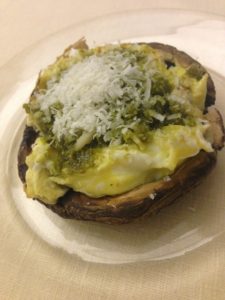 Medicinal mushrooms have been part of traditional medicine for thousands of years. Ancient Egyptians associated mushrooms with immortality and a food for kings and queens. The Chinese also promote mushrooms for longevity and health since early research showed anti-cancer properties in a wild mushroom found growing in Southern China.
Medicinal mushrooms have been part of traditional medicine for thousands of years. Ancient Egyptians associated mushrooms with immortality and a food for kings and queens. The Chinese also promote mushrooms for longevity and health since early research showed anti-cancer properties in a wild mushroom found growing in Southern China.
Maitake and reishi mushrooms are best noted for their betaglucans or glycoproteins which enhance immune function and help ward off infectious diseases from bacteria, viruses and fungi/mold. Maitake mushrooms have the highest Vitamin D levels (ergosterols or Vitamin D2) of most commonly consumed mushrooms. Shitake and reishi are noted for liver protection which is important for those using acetaminophen medications. Cordyceps have anti-aging qualities and increase energy production according to researchers in the Journal of Ethnopharmacology.
Chemotherapy patients get improved anti-tumor benefits from mushrooms because they increase natural killer cells or lymphocytes. Since mushrooms are easy to add to the diet and very interchangeable even those fatigued from treatment can add them using these suggestions: shitake = meaty & great in stir fry; morels = smoky and woodsy flavor; lobster = bright reddish orange color with neutral taste.
The white button or field mushrooms found in most supermarkets are of little nutritional value so choosing varieties named above offer the best nutrition for the money. People with intestinal yeast overgrowth or yeast sensitivities may have a crossover reaction to the fungi family so consume them cautiously.
Safety and quality should be the first thing to consider when adding them to your diet. Mushrooms can have health risks because as a fungus they absorb environmental pollutants like heavy metals, pesticides, and radioactivity. Eating organically grown mushrooms is the best way to be safe. Mushroom cultivation goes back centuries. When I visited a mushroom farm in China, rice chaff was used to cultivate shitakes. Today, growers have domesticated many varieties including Portabellas.
The part of the mushroom we eat is simply the fruit of the fungi that lives underground as a network of microspopic filaments. Only wash mushrooms just before adding them to a stir fry, broth or salad. Since many supermarkets like to wrap portabellas, be sure to unwrap them ASAP to preserve freshness. My favorite way to make a quick lunch or supper is Grilled Portabella Mushroom Delight.
Grilled Portabella Mushroom Delight
1 fresh portabella mushroom
1 egg
1 teaspoon prepared basil pesto
1 teaspoon grated Parmesan cheese
Brush top and bottom of mushroom with olive oil to prevent sticking to grill. Grill 3 to 5 minutes on each side. Scramble egg in no-stick pan or lightly oiled skillet. Pour onto grilled mushroom. Top with pesto and cheese. Broil 1 minute, if desired. Makes 1 serving. Serve with vegetables or salad.
Calories per serving: 154
Protein 11 g
Carbohydrates 8 g
Fat 8 g
Sodium 81 mcg